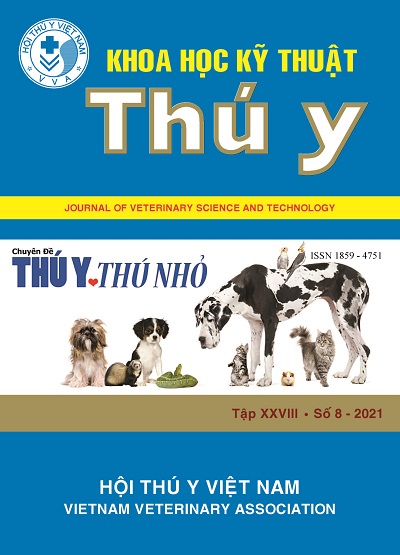Study on cetylpyridinium chloride and chlorhexidine gluconate composition in preventing formations of plague or tartar in dogs
Abstract
A total of 20 dogs raising at the Experimental Farm of Vemedim Research and Development Center
were used as material for this study. The experimental dogs were divided into 2 groups: 10 dogs were
treated with cetylpyridinium chloride (CPC) and chlorhexidine gluconate (CHG), and 10 dogs were used
for negative control. All the experimental dogs were fed with the same diet with a high starch content to
promote the formation of plaque or tartar in dogs. The experiment was conducted for 6 weeks and was
checked every 2 weeks for one time, on the days 1st , 14th , 28th and 42th; the score was determined
according to the method of Logan and Boyce (1994). The CPC + CHG solution was shown to be very
effective in reducing plaque – tartar formation in dogs, with an average score of 4.3 and 9.5 points on the
days 28th and 42th, respectively, compared to the negative control group, which received an average
score of 10.2 and 16.2 points on the days 28th and 42th, respectively. Assessment of the coverage of
plaque showed that, for the dogs in the group using CPC + CHG, the plaque covered approximately 50%
of the tooth surface after 42 days while the plaque covered nearly 90% of the tooth surface of dogs in
the negative control group. Evaluation of the thickness of the plaque on the teeth of dogs on the day 42th
indicated that the dogs in the group using CPC + CHG received an average score of 3.3 points while the
dogs in the negative control group received an average score of 4.5 points. The conclusion of this study
is that CPC and CHG are very effective in preventing the formation of plaque – tartar in dogs.

